Find out how Hille Melbye Architects used natural lighting to create an untraditional multipurpose sports complex in Oslo. And a lighting designer explains why less light sometimes can be more than enough.
Written by Rita Tvede Bartolomei
“The history of architecture is the history of the struggle for light”, as Le Corbusier put it: “this is why, in my opinion, architecture should be designed and optimized so that it needs a minimum of aid from electrical lighting to work during daytime. With the lighting requirements of today this is a tough exercise, especially in larger buildings. With the right amount of light, well-designed buildings and interiors are considerably enhanced” says the Norwegian architect, Robin Rakke, at Hille Melbye Architects in Oslo.
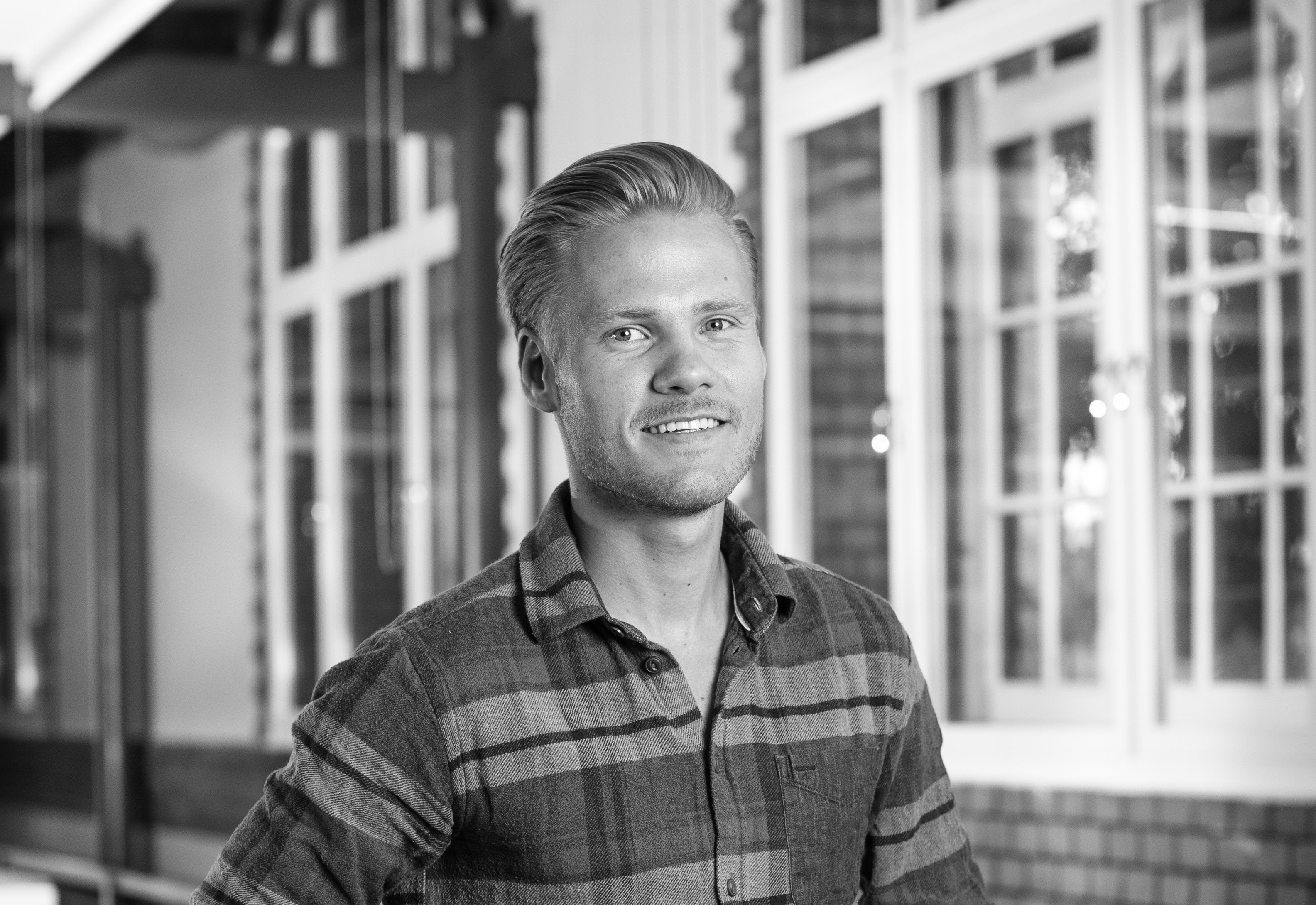
Norwegian architect Robin Rakke at Hille Melbye Architects. Photo: © Hille Melbye Architects
Because of its importance, light and lighting is an integral part of architectural design – along with many other parameters. “It determines the area of utilization and the aesthetic environment provided, which demands skills and careful planning to master” says Rakke.
Light reinvented a multipurpose sports complex
The Norwegian architect says the most sports arenas and stadiums are very closed off and introverted buildings but with Nye Jordal Amfi (that opened in September 2020) the architects at Hille Melbye sought to literally open up the facades with more transparency. “In this way we allowed daylight to enter into the core arena space. "But also exposing the daily indoor activity to its surroundings outside. These actions seek to give positive effects for the daily users and the building’s urban context” says Robin Rakke.
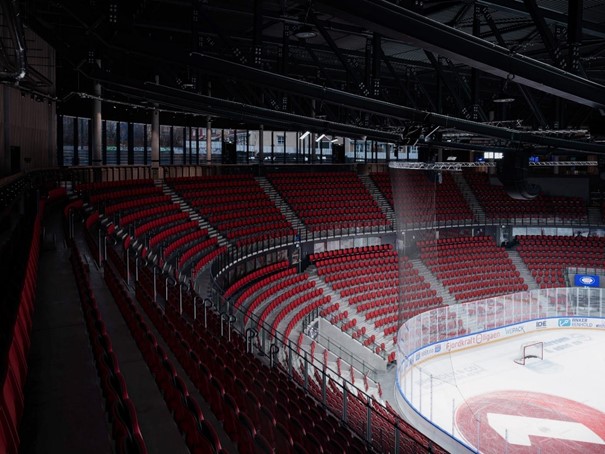
Hille Melbye Architects have created the opposite of an introverted, closed off building structure. The spectator stands are gradually fading into darkness, the further they are from the ice rink. Photo: © Einar Aslaksen / Pudder Agency
Inside, the ice rink has a glowing light effect in the centre of a relatively dark arena space. This is achieved by accent lighting applications.
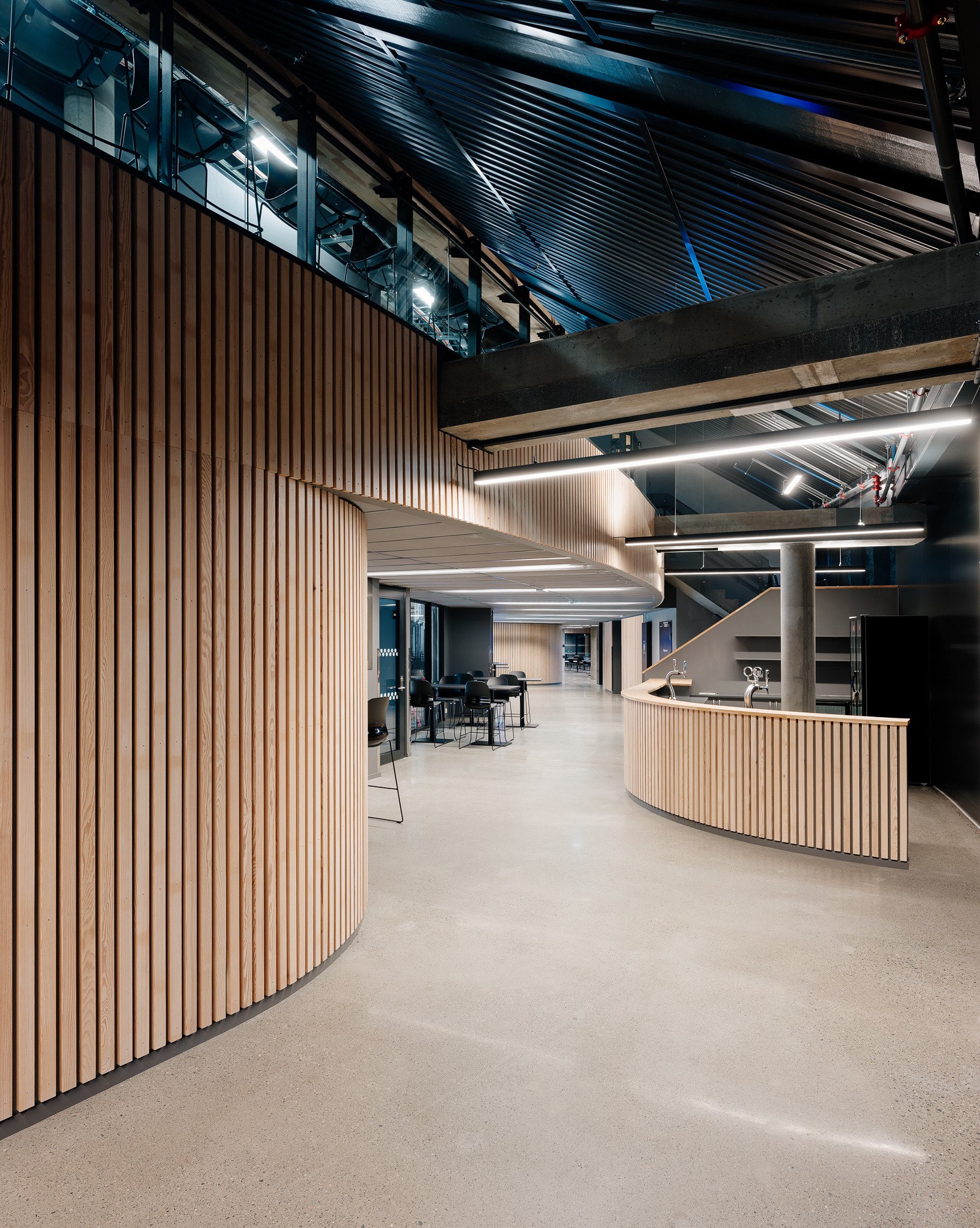
Curves in combination with clever lighting create a more dynamic and vibrant aesthetic at Nye Jordal Amfi. Photo: © Einar Aslaksen / Pudder Agency
“We wanted the spectator stands to fade out from being lit and gradually move into darkness: they have less light the further away they are from the ice rink. This creates depth and a dramatic perception of the arena space” says Robin Rakke.
Hille Melbye Architects also are the very first licensed architects to use new software for planning natural lighting in project design: Spacemaker AI. “We utilize the software for daylight analysis in the early stages of design. It enables us to optimize projects to get sufficient daylight - both outdoors and indoors” he says.
Lighting sets the mood - and the design
The lighting-designer of Flos Norway, Rikke Mørk, explains that lighting and luminous objects have the final and most important say in how a room will make you feel.
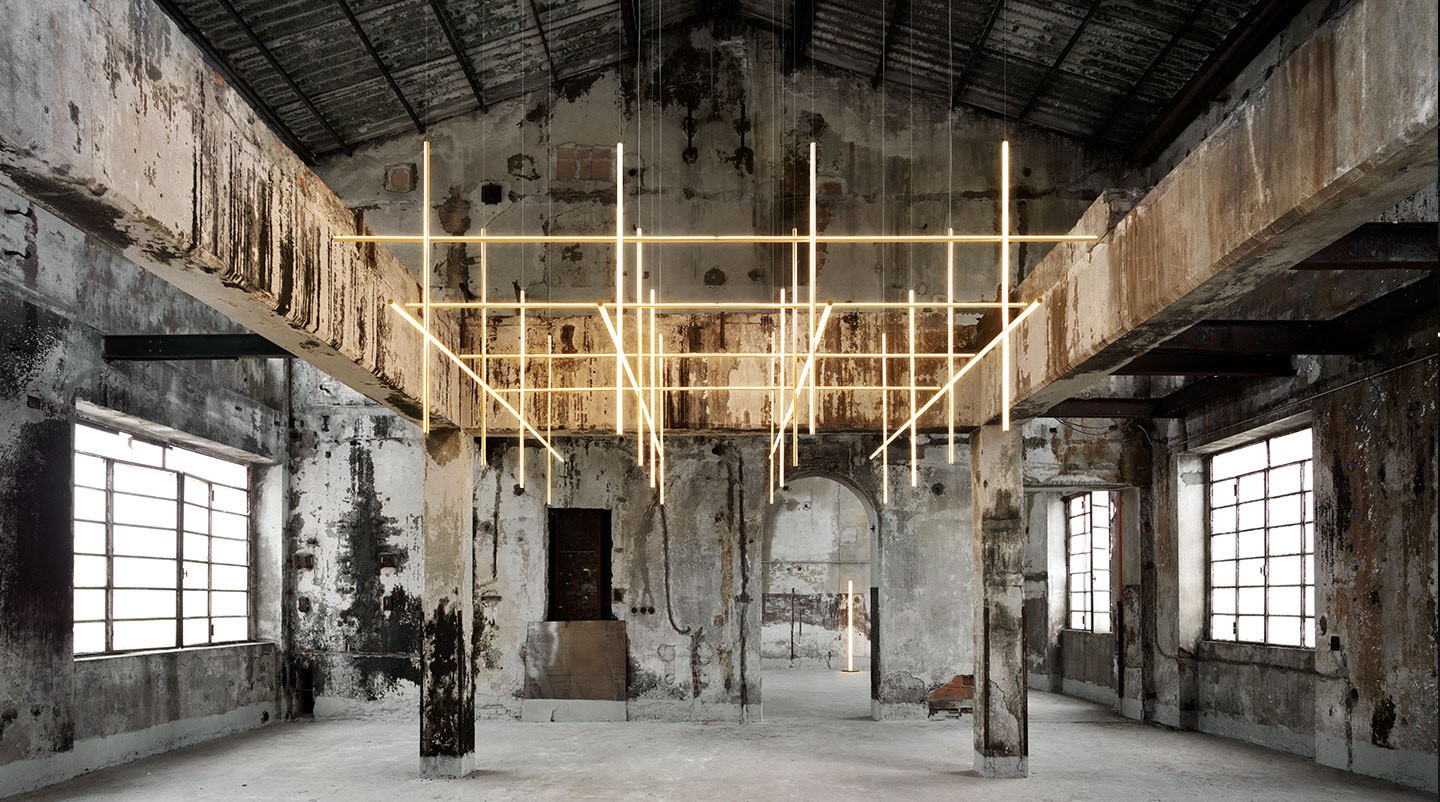
The geometric installation “Coordinates”; a suspension lighting by designer Michael Anastassiades. © Photo: Flos
“By making deliberate choices, we can highlight certain things, while leaving others in the shade. This is equally important when creating outdoor or indoor lighting. Removing unnecessary lighting, is perhaps the most important and hardest thing to do” says Mørk.
But can good lighting do more than alter your mood? Can it actually promote healing? Apparently it can, because the new University Hospital in Stavanger, Norway, opening in 2023, will use clever lighting to make the building more human and less institutional.
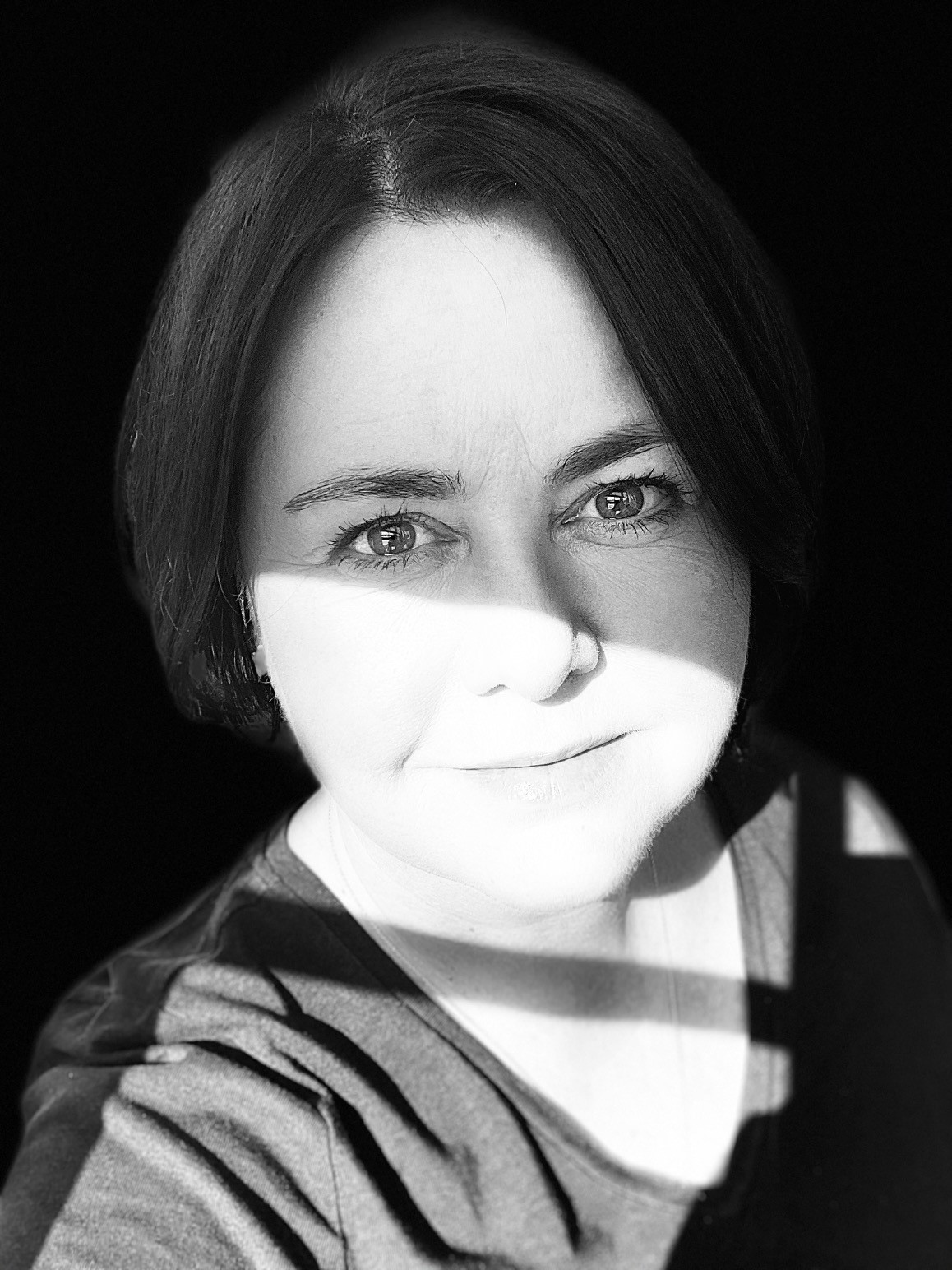
Lighting designer at Flos Norway, Rikke Mørk. © Photo: Flos
Rikke Mørk’s experience is that technical and architectural lighting is becoming a more important part of the overall design of rooms. New technology, like LED, has opened up a new world of opportunities for designers. This has been presented in amazing design objects and lighting installations. They are not just basic shapes like circles, lines, squares and triangles. “In design lighting we see an extensive use of different materials and colours, along with the pure graphic form. This is likely a trend that will provide us with a lot of exciting new light objects and decorative light items in the years to come” she says.
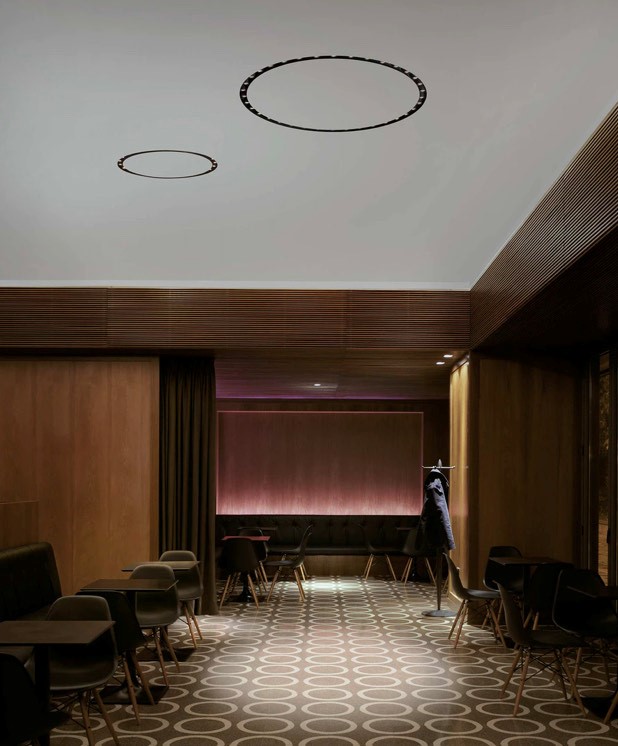
This circular LED-lighting accentuates and resonates with the patterns on the floors.
© Photo: Flos
A mix of textures and styles in 2021
The online interior design magazine MyDomaine argues that a mix of different lighting styles is trending right now: a mix of materials, colours and textures, a mix of sleek and rough surfaces, but also a mix of minimalistic and maximalistic designs. Lighting that creates a warm and cozy glow and lighting that mimic natural light, is definitely a big thing for home interior design in 2021. Adjusting the level of warmth, coolness and intensity of lighting is made possible with LED-technology and more advanced dimmer systems. “Natural light settings replicate the changing colour and intensity of sunlight throughout the day, bathing any space in white light during the day and transitioning to warm, amber light in the evening” says interior designer Sasha Bikoff to MyDomaine.